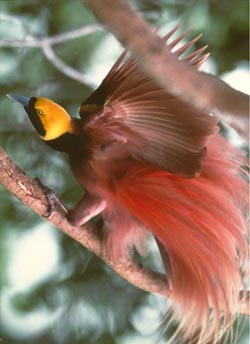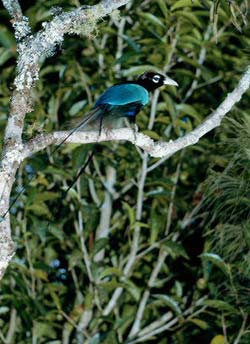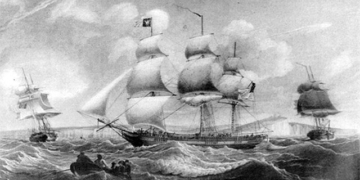It is said that the Paradise bird is a divine bird, living in paradise, feeding on nectar and drinking dew drops. When it dances, enchanting music fills the air. It is known by many names such as the bliss bird, sun bird, and phoenix.
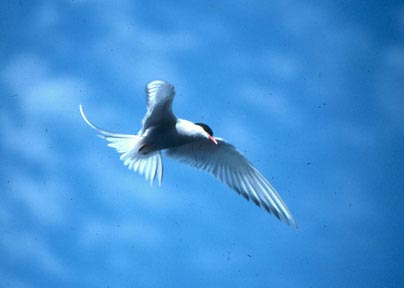
A type of Paradise bird in Alaska (Photo: cas.vanderbil)
In Papua New Guinea, located in the South Pacific, is where the Paradise birds reside. According to statistics, there are over 40 species of Paradise birds worldwide, with 30 species found in Papua New Guinea. Among them, the most famous include the Blue Paradise bird, the No-footed Paradise bird, and the King Paradise bird.
The head of the Paradise bird is lemon yellow, dressed in stunning plumage, especially its long, wide, and vibrant tail. The Blue Paradise bird, in particular, when calling its mate, often tilts its head back, arches its back, and raises its golden-yellow feathers at its sides, or
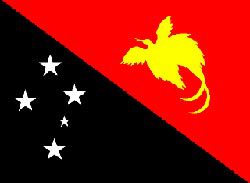 |
|
The flag of Papua New Guinea features the image of the Paradise bird |
hang upside down on branches, displaying its magnificent patterned plumage to attract a mate.
The No-footed Paradise bird does have feet; it’s just that its legs are very short; when flying, its feet are hidden in its feathers, making them invisible. The tail and wing feathers of the No-footed Paradise bird are two to three times longer than its body. It is also referred to as the Long-tailed Paradise bird.
The King Paradise bird, with a body length of about 20 cm, is much smaller than other Paradise bird species. It is known for its loyalty; when one mate dies, the other will often stop eating and die as well. The King Paradise bird prefers to live alone, not sharing its space with other Paradise birds. When the Paradise birds relocate, the King Paradise bird always flies ahead as a guide.
The Paradise bird is a symbol of Papua New Guinea, appearing on both the national flag and coat of arms, as well as in airline logos and various souvenirs.
|
|
|








































